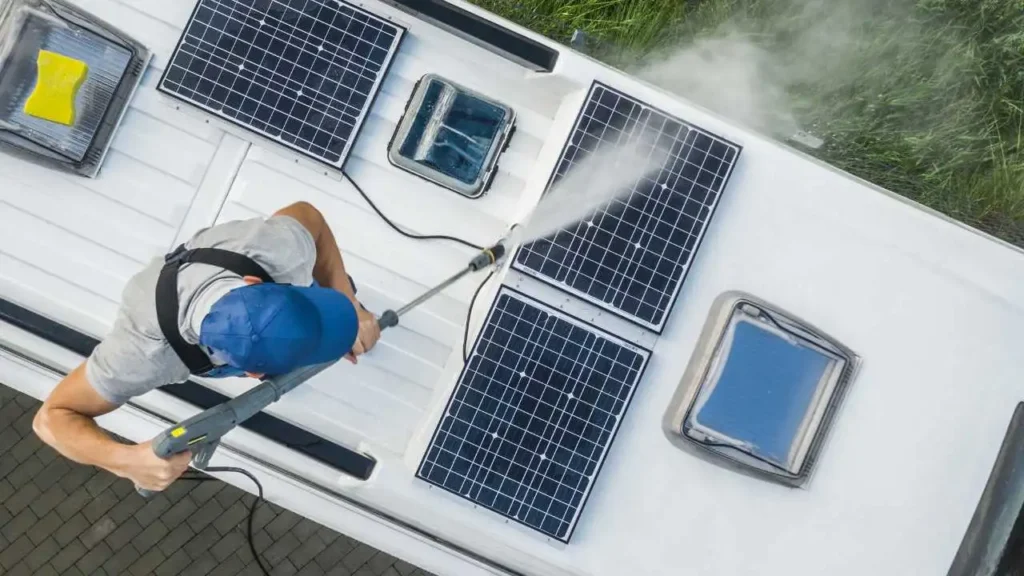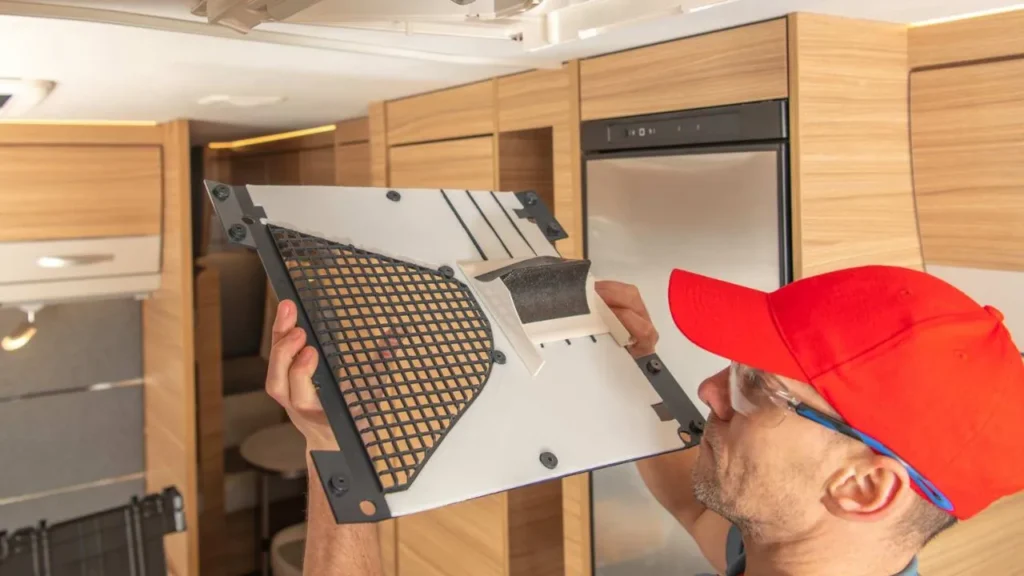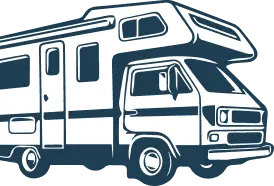
A functional electrical system is the lifeblood of a comfortable RV trip. It keeps your lights on, and appliances running, and ensures everything from entertainment to climate control functions smoothly. However, even the most well-maintained RV can experience electrical problems. Knowing how to troubleshoot and fix common RV electrical issues can save you from unnecessary stress and ensure your adventures stay on track.
Understanding Your RV's Electrical System
Before diving into troubleshooting, let’s explore the basic components of an RV’s electrical system:
- Shore power connection: This allows you to plug into an external power source at a campground, typically 120-volt AC (alternating current).
- RV converter: Converts incoming AC shore power to 12-volt DC (direct current) to charge your RV’s batteries and power DC appliances.
- Battery disconnect switch: Allows you to isolate the batteries for safety and prevent parasitic drain.
- RV batteries: Provide 12-volt DC power to run lights, appliances, and other DC systems when not connected to shore power.
- Solar panels (optional): Can be used to charge your RV batteries while off-grid.
- GFCI outlets: Ground Fault Circuit Interrupter outlets provide an added layer of safety by tripping in case of a ground fault.
- Circuit breaker panel: Protects your electrical circuits from overload by automatically shutting off power if too much current is drawn.
How to Spot Electrical Problems in Your RV
The first step to fixing an electrical problem is recognizing the signs. Here are some common indicators that your RV’s electrical system might need attention:
- Loss of power: This can manifest in complete blackouts or specific outlets or appliances not functioning.
- Flickering or dimming lights: Fluctuations in light can indicate loose connections, low battery voltage, or converter problems.
- Burning smell: A burning odor coming from the electrical panel or outlets is a serious issue and requires immediate attention.
- Tripped breakers or blown fuses: These safety mechanisms activate to prevent circuit overload, but frequent tripping can point to underlying issues.
- GFCI outlets tripping frequently: While this is a safety feature, repeated tripping could indicate a ground fault requiring professional diagnosis.
How to Check the RV’s Electrical System
Once you suspect an electrical problem, here’s a basic checklist to help you diagnose the issue:
- Visual Inspection: Start with a thorough visual inspection of your electrical system. Look for loose wires, damaged insulation, corrosion on battery terminals, or any signs of overheating or burning around electrical components.
- Check the Shore Power Connection: Ensure your RV is securely plugged into the campground pedestal and the main power cord is in good condition. Verify that the campground’s power supply is functioning properly.
- Inspect the Battery Compartment: Check the battery voltage with a voltmeter. A reading below 12 volts typically indicates a low battery. Look for any signs of corrosion on the battery terminals and clean them if necessary.
- Circuit Breaker Panel: Locate your RV’s breaker panel and identify any tripped breakers. Reset tripped breakers but be aware that frequent tripping might indicate a circuit overload.
- GFCI Outlets: Try resetting tripped GFCI outlets by pressing the reset button. If it doesn’t reset, there might be a ground fault in the circuit, and it’s best to avoid using the outlet until a qualified technician can diagnose the issue.
Remember: Safety is paramount. If you’re uncomfortable working with electrical systems or suspect a major electrical issue, don’t hesitate to consult a qualified RV technician.
Top 5 RV Electrical Problems and How to Fix Them
1. Tripped Breakers or Blown Fuses: This is a common issue that can cause a loss of power to specific outlets or appliances.
- Solution: Locate your RV’s breaker panel and identify the tripped breaker (usually indicated by a switch in the “off” position). Reset the tripped breaker by flipping the switch back to “on.” If the breaker trips again immediately, there might be a short circuit in the wiring, and it’s best to consult a qualified RV technician. Blown fuses are less common in modern RVs, but if your RV uses them, identify the blown fuse and replace it with one of the same amperage rating.
2. No Power When Connected to Shore Power: This can be caused by several factors.
- Solution: First, check if the campground’s power pedestal is functioning properly. Then, ensure your RV is securely plugged into the shore power connection and that the main power cord is in good condition. Next, inspect your RV’s breaker panel to see if any breakers have tripped. Finally, verify that the converter’s main breaker is on.
3. Dead Batteries: A dead battery can leave you without power when disconnected from shore power.
- Solution: If your RV has been sitting unused for a while, the batteries might be drained. Connect to shore power to recharge them. If the batteries don’t hold a charge, it might be time for replacements. Another culprit could be a faulty converter that isn’t properly charging the batteries. You can check for a blown fuse or tripped breaker within the converter itself. If those look okay, professional help might be needed.
4. Lights Flickering or Dim: This can indicate several issues, including low battery voltage, loose connections, or a failing converter.
- Solution: First, check your battery voltage with a voltmeter. If it’s low, connect to shore power or run the generator to recharge. Secondly, ensure all cable connections at the battery terminals, converter, and light fixtures are secure and free of corrosion. If the problem persists, consult an RV technician to diagnose a potential converter issue.
5. GFCI Outlet Not Working: GFCI outlets are essential safety features but can sometimes trip due to ground faults or moisture exposure.
- Solution: Locate the GFCI outlet in question and try resetting it by pressing the reset button. If it doesn’t reset, there might be a ground fault in the circuit, and it’s best to avoid using the outlet until a qualified technician can diagnose the issue.
A well-maintained RV electrical system is essential for a safe and enjoyable camping experience. By understanding the basic components of your RV’s electrical system, familiarizing yourself with common problems, and performing routine maintenance, you can keep your adventures powered up and avoid unnecessary headaches. Remember, safety is paramount. Don’t hesitate to call a professional when dealing with complex electrical issues to ensure a happy and trouble-free RVing adventure.
When to Call a Professional
While troubleshooting some RV electrical problems can be done yourself, there are situations where seeking professional help is crucial:
- If you suspect a major electrical issue like a damaged wiring harness or a malfunctioning converter.
- If you’re uncomfortable working with electrical systems.
- If the problem persists after trying basic troubleshooting steps.
A qualified RV technician can diagnose complex electrical problems and ensure repairs are done safely and correctly.
Conclusion
A well-maintained RV electrical system is essential for a safe and enjoyable camping experience. By understanding the basic components of your RV’s electrical system, familiarizing yourself with common problems, and performing routine maintenance, you can keep your adventures powered up and avoid unnecessary headaches. Remember, safety is paramount. Don’t hesitate to call a professional when dealing with complex electrical issues to ensure a happy and trouble-free RVing adventure.



